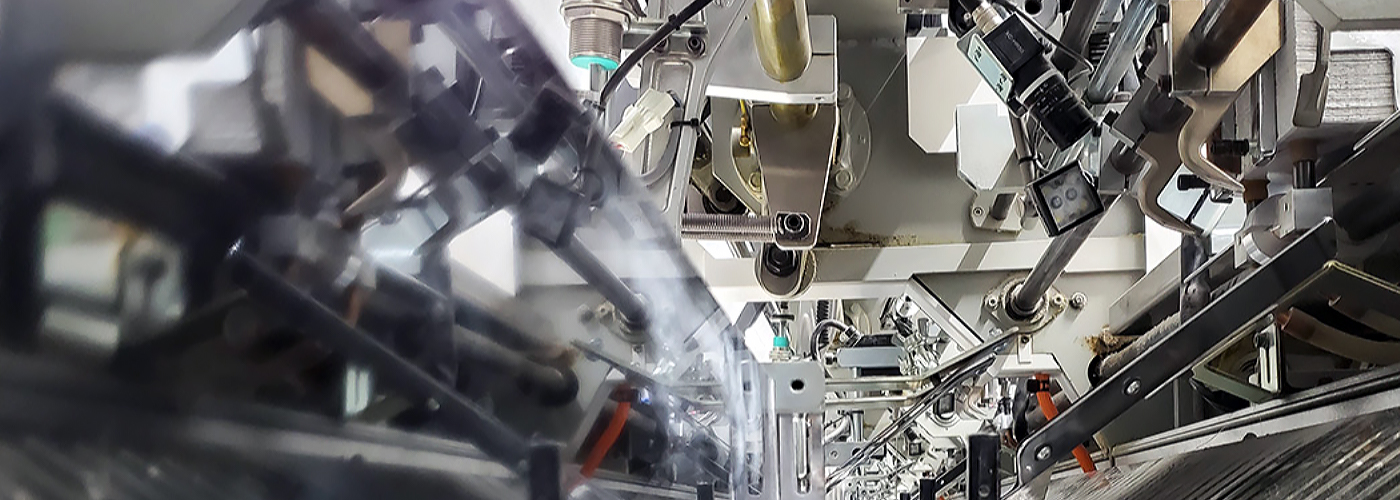
In bookbinding, a gathering machine is used to assemble individual sheets or signatures into the correct order for binding. It ensures that the pages are arranged in the proper sequence before they are bound together. Gathering machines may have pincer arms, rotary arms, or friction devices, and different fetching systems are preferable for different binding things and different speeds.
|
In printing, a machine is designed for assembling signatures (from printed sheets) into books, pamphlets, and magazines. The machine consists of a head (with a drive mechanism and receivers), an assembly conveyor, and the required number of sections with groups of hoppers and devices (usually arms) for pulling out signatures. The general arrangement of the automatic gathering machine for placing one signature on top of another and the main variations in the operation of gathering machines are shown in Figure 1. Stacks of signatures (Si) are loaded into the hopper (H). Each arm (A) in turn separates the bottom signature from the stack and guides it to the assembly conveyor, which moves the sets being gathered to the receiver (R). The machine stops automatically if a signature is missed or two are pulled out instead of one; a signal shows where the trouble is. When one set of signatures is being gathered (Figure 1,a), the number of hoppers and arms is equal to the number of signatures in the book, and the assembly conveyor moves the intermediate products one step / for each working cycle. The hoppers are refilled and the receivers are loaded without stopping the machine. The gathering machine can select two identical sets (Figure 1,b) or two different sets at doubled conveyor speed with alternate output to two receivers (Figure 1,c). Such gathering machines (with pincer arms) are produced in several modifications, with numbers of hoppers n = 12+6q, where q is the number of attached sections. In two-conveyor gathering machines (Figure 1,d), the sets of signatures are fed out to a common receiver (R1) or separately to individual receivers (R2 and R3).
Figure 1. Diagrams of the operation of gathering machines Gathering machines may have pincer arms (Figure 2,a), rotary arms (Figure 2,b), or friction devices (Figure 2,c). In the pincer devices, the grabbers bend the signature back, the stoppers press against the stack and hold it, and the pincers grasp and separate the signature;
In the rotary devices, a group of hooks on the rotor grasp and separate the signature; and in friction devices, the rollers press the signature against disks, which separate it. Pincer devices are reliable for slow and medium operating speeds (30<n<90 working cycles per minute). The rotary and friction systems are preferable for high-speed machines (up to 200 signatures per minute from each hopper).
Figure 2. Diagrams of the operation of pincer arms (a), rotary arms (b), and friction devices (c): (1) grabbers, (2) stoppers, (3) pincers, (4) hooks, (5) rotor, (6) rollers, (7) disks For pamphlets and magazines with a small number of pages, gathering machines are used that insert one signature into another; they are usually built into aggregates and multiple-operation flow lines. Gathering machines that gather sets of individual sheets are used to produce sets of postcards and posters and in small-scale step-and-repeat duplication. |
| Tag:gathering machine,sewn book block |
Please Leave Your Messenger Here!
We will do our best to make your business prosperous!




